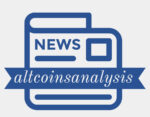
The Pi Network has emerged as one of 2025’s most polarizing cryptocurrency initiatives. Marketed as a mobile-first blockchain project, Pi Network aims to democratize access to cryptocurrency by allowing users to mine its native token, Pi coin, through a smartphone app. However, the project faces a host of criticisms, from concerns over centralized control to discrepancies in user engagement figures.
Origins and Development of Pi Network
Founded in 2019 by Stanford graduates Nicolas Kokkalis, Chengdiao Fan, and Vince McPhillip, the Pi Network gained attention for its innovative approach to cryptocurrency mining. By enabling mining on smartphones, Pi removed traditional barriers like expensive mining equipment and significant energy consumption. The project’s timeline is marked by several notable milestones:
- March 14, 2019: The project officially launched on Pi Day, symbolizing the mathematical constant π (3.14).
- March 14, 2020: Pi entered the Testnet phase, laying the groundwork for decentralization by deploying distributed nodes.
- Late 2020: The node program allowed users to operate network nodes on personal computers.
- December 2021: Pi transitioned to an Enclosed Mainnet, facilitating KYC processes and app development within a restricted ecosystem.
- December 2024: The Open Network launch, initially slated for the end of 2024, was postponed to Q1 2025.
By January 2025, over 18 million users had completed KYC verification, though only 8 million had migrated their tokens to the mainnet. The final push to the open network is set for Q1 2025, making this a pivotal year for the project.
The Appeal and Challenges of Pi Network
Advantages:
- Accessibility: By allowing mining via smartphones, Pi eliminates the need for costly hardware and energy consumption. This opens up cryptocurrency participation to a broader audience, including those in developing regions.
- Energy Efficiency: Pi leverages the Stellar Consensus Protocol (SCP), known for its low energy consumption and quick transaction speeds.
- Community Focus: With an invite-only model and gamified mining system, Pi fosters a sense of community among its users, termed “Pioneers.”
Criticisms:
- Centralized Control: Despite promises of eventual decentralization, all active mainnet nodes remain under the control of the Pi core team. This contradicts the decentralized ethos of blockchain technology.
- Inflationary Tokenomics: Pi’s token supply has doubled within a year, with a circulating supply of 5.56 billion tokens as of January 2025. This rapid inflation raises concerns about long-term sustainability.
- Transparency Issues: While Pi claims to have over 60 million users, blockchain explorers report only 9.11 million wallets, of which just 20,000 exhibit daily activity. Such discrepancies cast doubt on its user engagement claims.
- Privacy Risks: The mandatory KYC process requires sensitive personal information, raising concerns about data security and potential misuse.
- Revenue Model: Pi’s reliance on in-app advertising to fund operations has been criticized as a distraction from building tangible utility and innovation.
Preparing for the Mainnet Launch
The transition to the open mainnet in Q1 2025 is a crucial moment for the Pi Network. Pioneers are advised to take the following steps to prepare:
- Complete KYC Verification: This is mandatory for transferring Pi balances to the mainnet. The extended KYC grace period ends on January 31, 2025.
- Stay Informed: Regularly check official Pi Network channels for updates on deadlines and migration processes.
- Engage with the Community: Participating in forums and social media discussions can provide valuable insights and support during the transition.
- Plan for Integration: Businesses and developers should explore ways to incorporate Pi into their operations, such as accepting it as payment or launching decentralized applications.
What’s Next for Pi Network?
Once the mainnet launches, Pi coins will be freely tradable on cryptocurrency exchanges, marking a significant shift from the enclosed ecosystem. The network anticipates the debut of over 80 community-created applications, including:
- Map of Pi: A directory of merchants accepting Pi.
- Pi Game: A gaming platform using Pi currency.
- Care for Pi: A health-focused app with Pi transactions.
- 1pi Mall: An online marketplace for Pi-based commerce.
These applications aim to enhance the utility of Pi coins, driving adoption and engagement. If successful, they could significantly influence the broader cryptocurrency ecosystem by setting a precedent for app-driven blockchain utility, fostering real-world use cases, and potentially inspiring similar initiatives across the industry. However, uncertainties remain. Delays in mainnet readiness and concerns over scalability could hinder the project’s progress.
The Verdict: Revolutionary or Risky?
The Pi Network’s vision of a more inclusive cryptocurrency ecosystem has undeniably captured global attention. Yet, its operational and structural challenges cannot be ignored. While the project’s emphasis on accessibility and community engagement is commendable, issues like centralization, inflationary tokenomics, and privacy concerns raise valid skepticism.
As Pioneers and investors await the mainnet launch, the question remains: Can Pi Network deliver on its promises and secure its place in the cryptocurrency landscape? Only time will tell if this ambitious project will become a trailblazer or a cautionary tale in the evolution of digital currencies.






